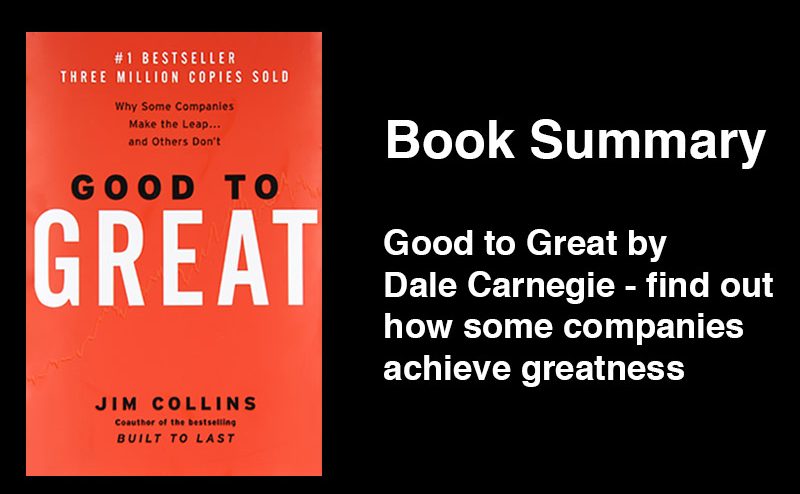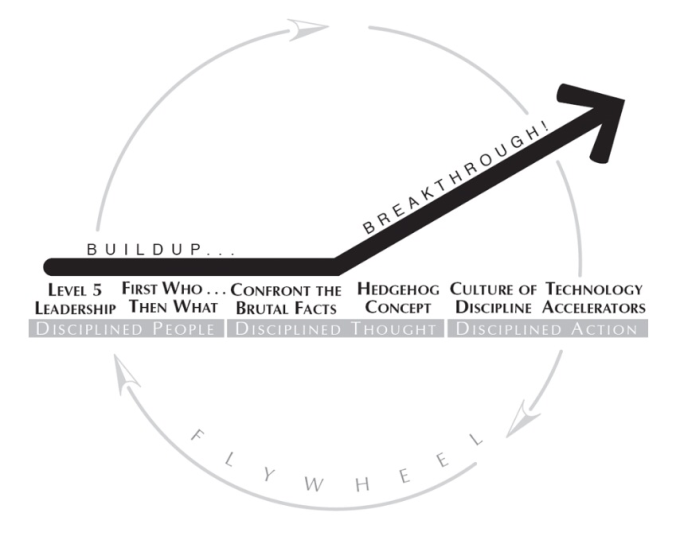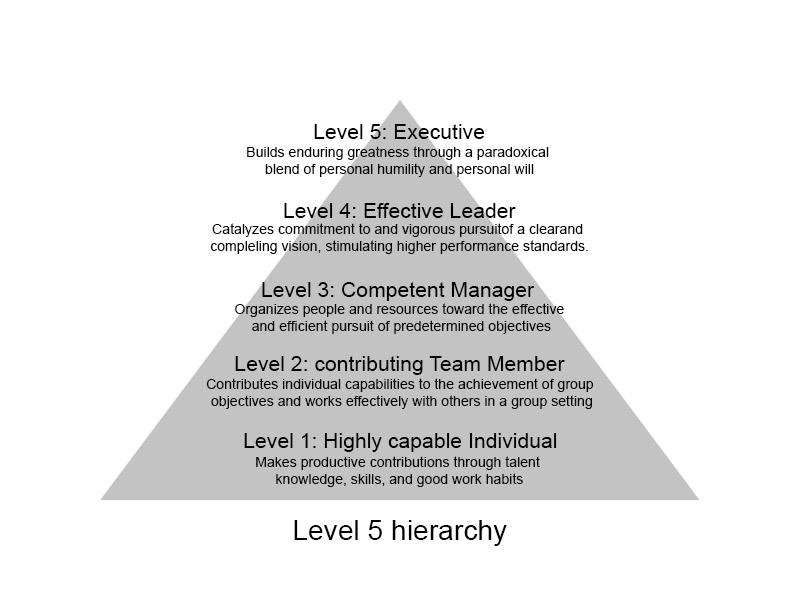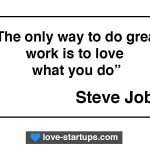
Good to Great – Book Summary
Will this book help you in your entrepreneurial journey?
Why Read This Book?
You are wondering why some companies make huge progress while other just stay good and never growth to become great. Here is the best explanation I have seen from the lecturer Jim Collins, who explains how some companies made the changes necessary to become great and beat the stock market by at least 3 times.
Who should read it?
This book focuses on big companies, it will not explain how to start a business to get you started or even growth. It is a great study that shows what steps successful leadership undertake to make their business become the best. Thus, managers, leaders or people really caring about making the best possible company should read this book.
Author Background
Jim Collins is an American business consultant, author, and lecturer on the subject of company sustainability and growth. You can visit his website at http://www.jimcollins.com/ for more information about him and about his books.
Book Summary – Good to Great
The research
company drastic selection
this was a 5-year research to work on good to great companies. Jim and his team have identified companies that made the leap from good results to great results and maintained those results for a minimum of 15 years. Those companies attained amazing results with an average stock return of 6.9 times the general market during the 15 years period of greatness.
The companies:
- needs to be at least 40 years old, as the study examine their performance for 40 years
- must sustained great results for at least 15 years
- are picked in the Fortune 500, there are all public companies
- were doing only good to mediocre results before that period of greatness
- should at least beat the market by 3 times during their period of greatness
| Good to Great companies | Comparison companies |
|---|---|
| Abbott Laboratories | Upjohn |
| Circuit City | Silo |
| Fannie Mae | Great Western |
| Gillette | Warner-Lambert |
| Kimberly-Clark | Scott Paper |
| Kroger | A&P |
| Nucor | Bethlehem Steel |
| Philipp Moris | R. J. Reynolds |
| Pitney Bowes | Addressograph |
| Wallgreens | Eckerd |
| Wells Fargo | Bank of America |
What came out from the research
The image below shows what came out of the research that they conducted.
Disciplined people
what the leaders stand for and who they employ.
Level 5 leadership (the executive team)
All the companies listed below had at some point level 5 leadership during the pivotal transitions years.
level 5 leaders:
- are ambitious for the company
The main difference between level 4 and level 5 leadership is that level 5 leadership prepare successors for a greater success in the next generation. They are really ambitious for the company, and not for themselves. On the other hand, level 4 leadership often set up their successor for failure or simply care only about themselves, not about the company - display a compelling modesty
Level 5 leaders don’t talk about themselves. They are usually modest, shy and reserved. Those are simple people that live in a small house and has the same routine that any other employees would have. - do what must be done
No matter the decision they need to take, even if it is a hard decision to make, they will always do it for the good of the company. If they have to fire their best friends to keep the company running or improve it, they will do so. Indeed, the company’s results are their primary focus. - take responsibilities
If the company become successful, the level 5 leader will claim it as good luck, never showing his pride. but if the company make bad moves, the level 5 leader will take the responsibility instead of blaming others.
Unfortunately, level 5 leaders are often not considered for a CEO role. Unlike, level 4 leader, they are not celebrities and act like a showman. However, they would be the one that would make the company really successful as they focus on results and not on self-promotion.
First who then What (the employees)
The first step toward getting great results is to get the right people on the bus and the wrong people off the bus.
Most companies would start by focusing on what to do, then, they would select people that have the matching skills required to build what they planned. If the leader leaves, the project will automatically fail. However, good to great companies focus on getting the right people first, then start thinking of what to do to improve the company.
Compensations do not make the company from good to great unless the right person is on the bus.
Good to great companies are rigorous, only their best staff don’t need to worry about getting fired. But if you are not good enough, you will not stay long in the company.
3 disciplines for being rigorous:
- Only hire the best, if not sure don’t hire keep looking.
- Have people in the right seat, but when you know you need to make people change, act
- Select the best people on your biggest opportunities for them to expand the company, and not make them fix your biggest problems.
Disciplined thought
When you have the right people in your company, you can start thinking of what to do next to improve the company
Confront the brutal facts
Good to great companies start to confront the brutal facts of their current reality. It is important to create a culture where people can give their opinions for the truth to be heard.
4 principles that will help people to give the truth:
- Lead with questions, not answers
- Engage in dialogue and debate, not coercion
- Conduct autopsies, without blame
- Build red flags mechanisms that turn information into information that cannot be changed
Stockdale paradox: “You must maintain unwavering faith that you can and will prevail in the end, regardless of the difficulties, AND at the same time have the discipline to confront the most brutal facts of your current reality, whatever they might be. ”
Good to great companies do not spend the time to motivate their employees, they are already self-motivated. What is important is not to demotivate them.
Hedgehog Concept
the 3 circles
- Understanding your passion
In order for the company to sell its products or services, executives as much as employees need to be passionate about what they do. It cannot be forced, it has to come from the heart. - What you can be the best at:
You have to have an understanding of what you can be the best at and not selecting objectives and goals to be the best at. This has to be your biggest strength. Maybe, in order to find what you can be the best at, you need to first know what you cannot be the best at. - What drives your economic engine
companies do not need to be in a great industry to succeed. A profit per x needs to be clearly defined in order to know how much profit can be made per ratio. For example, profit per employee, per customer, per geographic region…
The council guided by the 3 circles
- ask questions
- dialogue and debate
- executive decisions
- autopsy and analysis
Disciplined Action
Culture of discipline
After finding the right people and defining the 3 circles of the hedgehog concept, the good to great companies need to take disciplined action and carefully follow the hedgehog concept in order to sustain great results.
The culture of discipline allows people to gain more responsibilities and freedom. As they are been carefully selected, the company trust them more and allow them to accomplish more for the company. On the other hand, bureaucracy cultures aim to compensate a lack of discipline, because the wrong people were hired in the first place.
Any idea that does not fit with the hedgehog concept will be automatically denied as it does not match with the common company’s vision. Moreover, having a stop doing list can help companies to stop doing projects or businesses that are outside of the hedgehog concept. If an idea is selected, all the budget will be focused on it.
Culture of technology Discipline accelerators
The good to great companies used technology as an accelerator of momentum, not a creator of it. The study shows that from all the executives interviewed, only a few talked about technology as the most important part of the transformation toward becoming a great company.
Technology is treated the same way as any other ideas. If it does not fit in the hedgehog concept, the good to great companies will not implement it. The technology will only be implemented if it fits with the concept. In fact, even if a technology is great, if it does not directly scale the company and help it to be more successful, it is better to ignore it.
The Flywheel and the Doom Loop
The Flywheel (good to great companies)
“Picture a huge, heavy flywheel-a massive metal disk mounted horizontally on an axle, about 30 feet in diameter, 2 feet thick, and weighing about 5,000 pounds. Now imagine that your task is to get the flywheel rotating on the axle as fast and long as possible.”
At first, it requires 2 to 3 hours of consequent effort to push the flywheel in order to make an entire turn. The more you keep pushing, the more the flywheel will move faster. The flywheel will increase it speed exponentially as you keep pushing.
Companies work pretty much the same way. The more a good to great company makes a good decision, the more the company will succeed. Usually, after a few years taking the right decisions on a daily basis, the company will eventually hit a point of breakthrough where the media will start talking about the company as it was an instant success. However, it required them many years of working every day towards smaller goals achieved one after another. In fact, good to great companies had no specific events that made them more popular at a specific period, it was just a constant work on pushing the flywheel to the right direction and constantly increase it speed.
The Doom Loop (comparison companies)
Instead on quietly working on what need to be done and do it, Comparison companies frequently launched new programs. It would be like pushing a flywheel, then suddenly stop and start pushing the flywheel in another direction. Expecting a breakthrough in one push, comparison companies skip building. like if they would expect on winning the jackpot in a casino by inserting a coin in a machine and looking at the result.
Conclusion
In order for a company to become great, firstly, the leaders need to follow the level 5 leadership principle and need to employ the right people on the bus. Secondly, they need to find what is not working or what could be done better by confronting the brutal facts and following the hedgehog concept. Thirdly, act upon those reflected decisions by trusting employees to do the job and allowing technology to scale the business. Finally, keep pushing the flywheel in the right direction to achieve long-term greatness.













[…] to get a breakthrough. The book ‘Good to great’ by Jim Collins explains the idea quite well (see the post about good to great book summary). So the overnight success is a Myth. Consider spending at least 2 or 3 years of hard work before […]